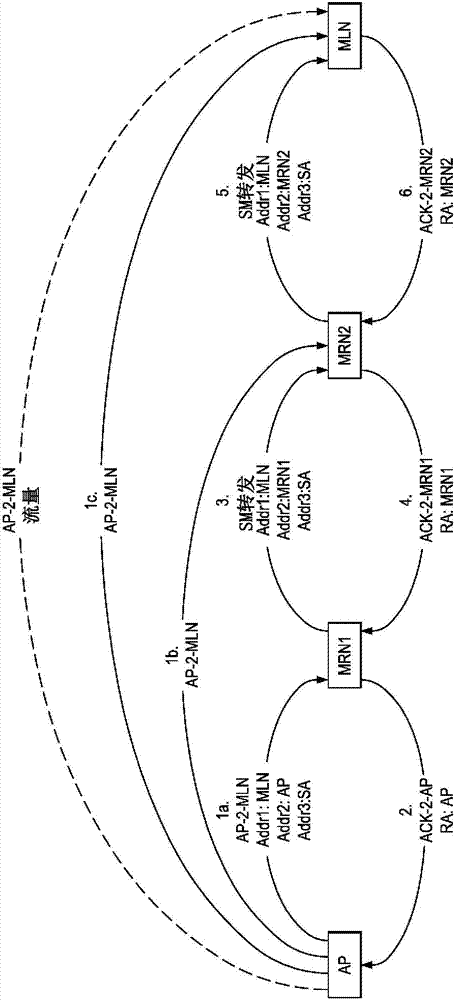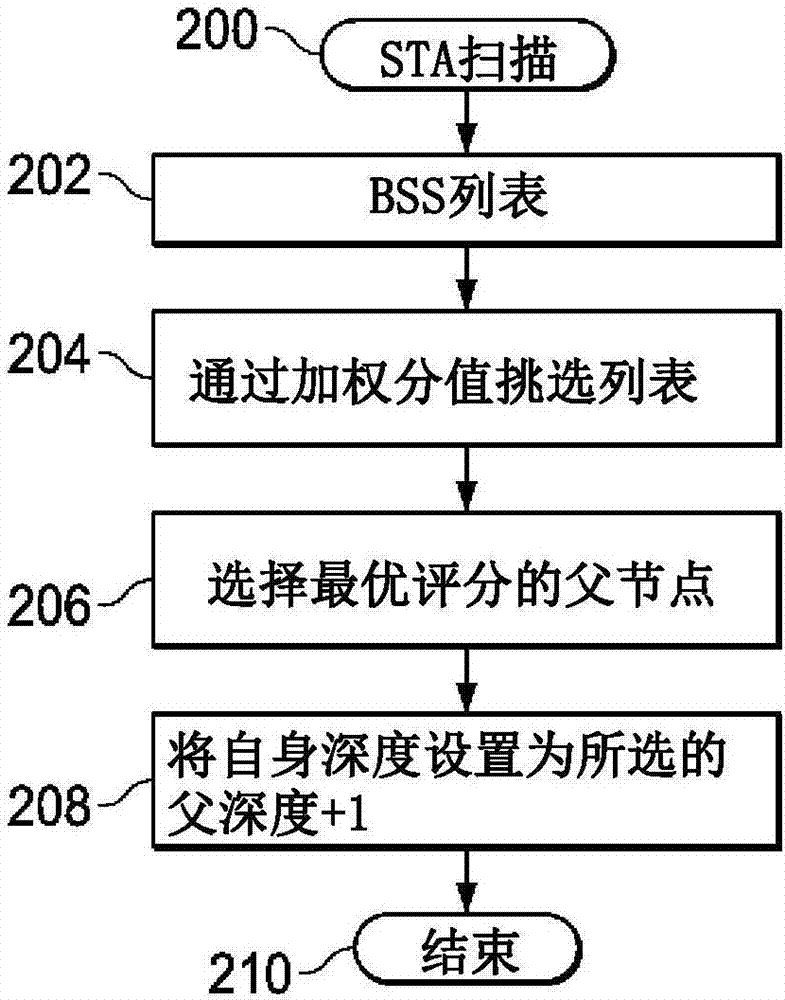Simple mesh network for wireless transceivers
A network and receiver technology, applied in wireless communication, network topology, data exchange network, etc., can solve problems such as limited memory and computing power
- Summary
- Abstract
- Description
- Claims
- Application Information
AI Technical Summary
Problems solved by technology
Method used
Image
Examples
Embodiment Construction
[0018] figure 2 The flowchart shows how Figure 4 and Figure 6 The formation of a simple mesh network is shown for the example embodiment. Here and in the discussion below, the simple mesh network can be any network of wireless nodes, to include range extenders or other wireless devices that can enter the network. The simple mesh network is preferably formed from access points (AP) down to each network relay node (MRN1, MRN2) and mesh leaf nodes (MLN). An AP can be a standard, proprietary, or other network node that provides Internet access. APs can also be connected to a Wireless Local Area Network (WLAN) for Internet access. The process begins when a wireless node wishing to join the mesh initiates a site scan 200 . The wireless node then receives a Basic Service Set (BSS) list 202 indicating all wireless nodes currently in the mesh network. The wireless node sorts the BSS list by weighted score (such as signal strength 204 ) and selects the best scoring parent node 2...
PUM
 Login to View More
Login to View More Abstract
Description
Claims
Application Information
 Login to View More
Login to View More - R&D
- Intellectual Property
- Life Sciences
- Materials
- Tech Scout
- Unparalleled Data Quality
- Higher Quality Content
- 60% Fewer Hallucinations
Browse by: Latest US Patents, China's latest patents, Technical Efficacy Thesaurus, Application Domain, Technology Topic, Popular Technical Reports.
© 2025 PatSnap. All rights reserved.Legal|Privacy policy|Modern Slavery Act Transparency Statement|Sitemap|About US| Contact US: help@patsnap.com



